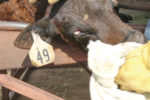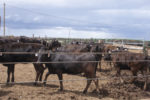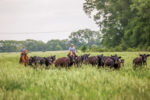Cattle Diseases
Effective cattle management, vaccine selection, timing and nutrition are necessary for cattle respiratory vaccines to be effective. When coupled with realistic expectations, vaccination of cattle for BRD can be greatly beneficial and rewarding.
Read More
Tips to manage stressors and minimize BRD
A common summer challenge is dealing with BRD. Mitigating risk is a critical component of a larger BRD battle plan. Risks can range from new cattle entering the herd to stressors caused by handling, nutrition and environment.
Read More
Don’t stress: Here’s how to handle the heat
Several factors can lead to stress in cattle and, although some are out of our control, there are steps producers can take to minimize stress and keep animals healthy.
Read More
Foothill abortions: All from a little tick
Foothill abortions have been perplexing producers in the West for many years. These large numbers of strange, late-term abortions in otherwise healthy cattle can be devastating. They are caused by the bacteria Pajaroellobacter abortibovis and spread by a little-known soft-shell tick, pajaroello.
Read More
Timing is everything for BRD protection
BRD is the costliest disease in the cattle industry and can have serious impacts on an animal’s production potential. Attacking BRD with a multifaceted approach that includes building immunity, mitigating risk and managing infections is important.
Read More
Essential practices to build BRD resilience in your calf crop
The path to economic success for cow-calf producers often hinges on the ability to develop healthy herds that are resilient to common management and disease challenges.
Read More
What are you doing to prevent pinkeye?
Pinkeye is not like other diseases. Many factors can contribute to an animal having the disease. However, there are also many ways a producer can work to prevent and treat this disease.
Read More
Bovine congestive heart failure in feedlot cattle
Cattle with the high-risk genotype of BCHF are 28 times more likely to develop the disease than a low-risk genotype. Early results could eliminate 30% of all heart failure. This begins with awareness, use of the tools and information that is available and management.
Read More
Cross country migration of liver flukes: They’re not a regional problem anymore
Liver flukes were once considered a wet region parasite. However, now not only are they found in the wet regions of the Gulf and Pacific coasts, but producers are dealing with them across the country.
Read More











